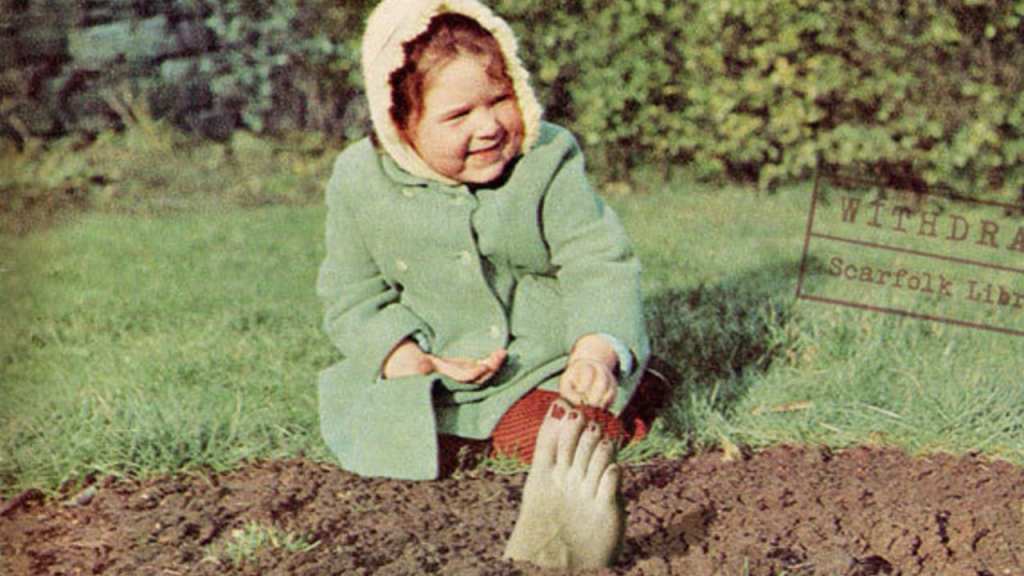Trending Now
In recent years, the public has been obsessed with dystopias – The Hunger Games, Divergent, The Maze Runner, and a wave of other books and movies have found their way into our brains and made us ask, “What if the future really went that badly?”
Well, in Scarfolk, England, the present is that bad…and it’s been that way since the 1970s.
Maybe that’s not exactly fair, considering it’s always the 1970s in Scarfolk. The decade plays on a loop, along with the frightening realities of living during that time – the government is always watching, and so are your neighbors. Strangers are not welcome, especially if they’re not like you. What you’re eating will kill you, and so will your toys, your television, and pretty much every single thing you come into contact with over the course of a day.
After the town cut its police budget in half in 1978, a wave of violent crime followed that created an influx of dead bodies. In order to keep up with the work load, the remaining police teamed up with the “Keep Britain Tidy” campaign to encourage citizens (especially children) to pick up body parts themselves.

Now, this is all pretty out there, and that’s because it’s not real. But with that being said…you weren’t totally sure it was made up either, right? Which tell us quite a bit about the current state of the world.
Scarfolk is the creative brainchild of graphic designer Richard Littler, who has been using his skills, wit, and some pretty impressive storytelling to write the history of the supernatural-tinged Scarfolk for a while, now. He uses his blog, “Scarfolk Council,” to present the story of the town through materials from Scarfolk’s archives – posters, pamphlets, and other items that show us what everyday life there is like.
And there’s one word for it: creepy.


Okay, fine. It’s also synonyms for creepy, like eerie, spine-tingling, chilling, spooky, and on, and on, and on.
Littler’s graphic design background shines through in the images, which are meticulously photoshopped and put together to appear as though they could be artifacts mined directly from the ’70s. Scarfolk erases the line between science fiction and reality (however blurred it has already become), and thrives on the macabre twists to everyday life.
For example, check out the public leaflet on the next page warning that “People are dangerous.”
The leaflet also says, “If you know any people, report them at once.” In Scarfolk, there’s a toy called “Mr. Liver Head,” and the school’s science book might look real…except for the chapter on how to wash a child’s brain.

Like most creations, Scarfolk’s particular brand of paranoia didn’t come out of nowhere – it’s inspired by Littler’s own perspective on growing up in the ’70s. He remembers feeling there was evidence of a terrifying real world everywhere he turned – public service announcements in which children were run over while playing on the train tracks, and stories in legitimate newspapers about botched surgeries and ghosts taking their revenge on the living.


“[I was] always scared, always frightened of what I was faced with…Paranormal subjects were treated as fact by the media. There were unsettling reports of violent poltergeist haunts in suburban homes. As a child, there seemed to be – to me, at least – scant difference between the natural and the supernatural.”
That bend toward the supernatural rears its head in Littler’s Scarfolk in a few different ways, but it is never acknowledged as anything strange – not the thought-detector vans, the dream recordings, or even the telekinetic child-owls who screech at misbehaving families. He’s also created a couple of hybrid entities – “Charlie Barn,” a creature with a baby’s head and spider legs that hypnotizes toddlers through the television (Caillou, anyone?), and the “Horned Deceiver,” a large, shaggy beast with a pentagram on its forehead.
While these odd, more fantastical elements abound in Scarfolk, it’s the ones that tiptoe closer and closer to reality that caught my attention.
For example, the town has an initiative to hand out “Foreigner Identification Badges” to all immigrants in the town.

But that’s not all. The Scarfolk Council also once approved a “Human Rights Lottery,” requiring citizens to “win the right to be acknowledged as a human being,” and once they also outlawed facts. Since, you know, no one really uses them anymore.

Sound familiar? It does to Littler.
“It had not been my intention at the outset to toy with the boundary between the 1970s and today. I thought it might be interesting to mirror/juxtapose modern-day events using ephemera of the 1970s – a decade the values of which we are supposed to have transcended.”
Key words: supposed to have.
Littler continues, talking about events that have happened around the world in the past year or so:
“…world events and politics have slid away from the suggestively dystopian toward the blatantly and unashamedly dystopian. Not a day goes by without some political event or figure rivaling the absurdity of anything a satirist can create.”
If you think this is all pretty amazing (as a writer of fiction, some of it dystopian, I certainly do), you’ll be happy to know that Littler has penned a book titled Discovering Scarfolk, and he is working on developing a corresponding television show, as well.
Pretty soon, the line between fantasy and reality may no longer exist at all. And what will all of the writers do then?
h/t: Atlas Obscura






